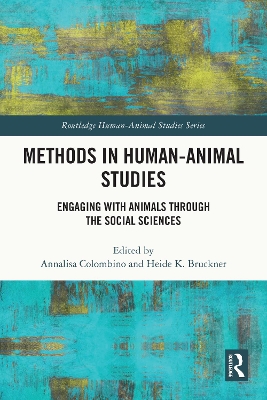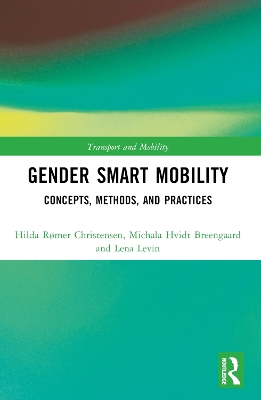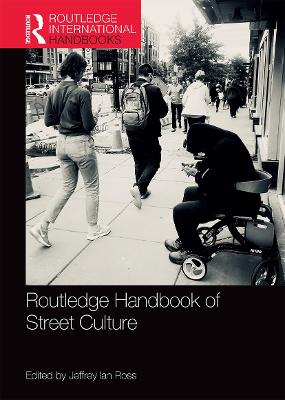Methods in Human-Animal Studies
 portes grátis
portes grátis
Methods in Human-Animal Studies
Engaging With Animals Through the Social Sciences
Colombino, Annalisa; Bruckner, Heide K.
Taylor & Francis Ltd
11/2024
214
Mole
9781032505084
Pré-lançamento - envio 15 a 20 dias após a sua edição
Descrição não disponível.
Chapter 1: Hidden in plain sight: how (and why) to attend to the animal in human-animal relations
PART I THEORISING
Chapter 2: Decentring humans in research methods: visibilising other animal realities
Chapter 3: Understanding human-animal relations from the perspective of work
Chapter 4: Re-thinking animal and human personhood: towards co-created narratives of affective, embodied, emplaced becomings of human and nonhuman life
PART II: COLLABORATING
Chapter 5: Two species ethnography: honey bees as a case study of an interdisciplinary "more-than-human" method
Chapter 6: Trekking a predator's journey: paths through the Greater Yellowstone Ecosystem
Chapter 7: How to do multispecies-ethnographies when exploring human-(wild) animal interactions: affect, multisensory communication and materiality
PART III: VISUALISING
Chapter 8: Shared sensory signs: mine detection rats and their handlers in Cambodia
Chapter 9: Doing multispecies ethnography with mobile video: exploring human-animal contact zones
Chapter 10: Getting visceral: body mapping the humanimalian
PART I THEORISING
Chapter 2: Decentring humans in research methods: visibilising other animal realities
Chapter 3: Understanding human-animal relations from the perspective of work
Chapter 4: Re-thinking animal and human personhood: towards co-created narratives of affective, embodied, emplaced becomings of human and nonhuman life
PART II: COLLABORATING
Chapter 5: Two species ethnography: honey bees as a case study of an interdisciplinary "more-than-human" method
Chapter 6: Trekking a predator's journey: paths through the Greater Yellowstone Ecosystem
Chapter 7: How to do multispecies-ethnographies when exploring human-(wild) animal interactions: affect, multisensory communication and materiality
PART III: VISUALISING
Chapter 8: Shared sensory signs: mine detection rats and their handlers in Cambodia
Chapter 9: Doing multispecies ethnography with mobile video: exploring human-animal contact zones
Chapter 10: Getting visceral: body mapping the humanimalian
Este título pertence ao(s) assunto(s) indicados(s). Para ver outros títulos clique no assunto desejado.
human-animal studies;more than human;research methods;animal studies;human-animal studies research;animal geographies;ethical research methods;animal ethics;human-animal studies research methods;Human Animal Studies;Grand Teton National Park;Black Bear Management;Human Canine Relationship;Wild Boars;Kingdom Animalia;Multispecies Ethnography;Nonhuman Animals;GYE;Animal Welfare Science;Human Nonhuman Animal Relations;Human Animal Relations;Honey Bees;MVE;Critical Animal Studies;Human Animal Encounters;Water Voles;Cognitive Ethology;Honey Bee Declines;Wearable Cameras;Multisensory Communication;Insect Pollinators;Animal Side
Chapter 1: Hidden in plain sight: how (and why) to attend to the animal in human-animal relations
PART I THEORISING
Chapter 2: Decentring humans in research methods: visibilising other animal realities
Chapter 3: Understanding human-animal relations from the perspective of work
Chapter 4: Re-thinking animal and human personhood: towards co-created narratives of affective, embodied, emplaced becomings of human and nonhuman life
PART II: COLLABORATING
Chapter 5: Two species ethnography: honey bees as a case study of an interdisciplinary "more-than-human" method
Chapter 6: Trekking a predator's journey: paths through the Greater Yellowstone Ecosystem
Chapter 7: How to do multispecies-ethnographies when exploring human-(wild) animal interactions: affect, multisensory communication and materiality
PART III: VISUALISING
Chapter 8: Shared sensory signs: mine detection rats and their handlers in Cambodia
Chapter 9: Doing multispecies ethnography with mobile video: exploring human-animal contact zones
Chapter 10: Getting visceral: body mapping the humanimalian
PART I THEORISING
Chapter 2: Decentring humans in research methods: visibilising other animal realities
Chapter 3: Understanding human-animal relations from the perspective of work
Chapter 4: Re-thinking animal and human personhood: towards co-created narratives of affective, embodied, emplaced becomings of human and nonhuman life
PART II: COLLABORATING
Chapter 5: Two species ethnography: honey bees as a case study of an interdisciplinary "more-than-human" method
Chapter 6: Trekking a predator's journey: paths through the Greater Yellowstone Ecosystem
Chapter 7: How to do multispecies-ethnographies when exploring human-(wild) animal interactions: affect, multisensory communication and materiality
PART III: VISUALISING
Chapter 8: Shared sensory signs: mine detection rats and their handlers in Cambodia
Chapter 9: Doing multispecies ethnography with mobile video: exploring human-animal contact zones
Chapter 10: Getting visceral: body mapping the humanimalian
Este título pertence ao(s) assunto(s) indicados(s). Para ver outros títulos clique no assunto desejado.
human-animal studies;more than human;research methods;animal studies;human-animal studies research;animal geographies;ethical research methods;animal ethics;human-animal studies research methods;Human Animal Studies;Grand Teton National Park;Black Bear Management;Human Canine Relationship;Wild Boars;Kingdom Animalia;Multispecies Ethnography;Nonhuman Animals;GYE;Animal Welfare Science;Human Nonhuman Animal Relations;Human Animal Relations;Honey Bees;MVE;Critical Animal Studies;Human Animal Encounters;Water Voles;Cognitive Ethology;Honey Bee Declines;Wearable Cameras;Multisensory Communication;Insect Pollinators;Animal Side







